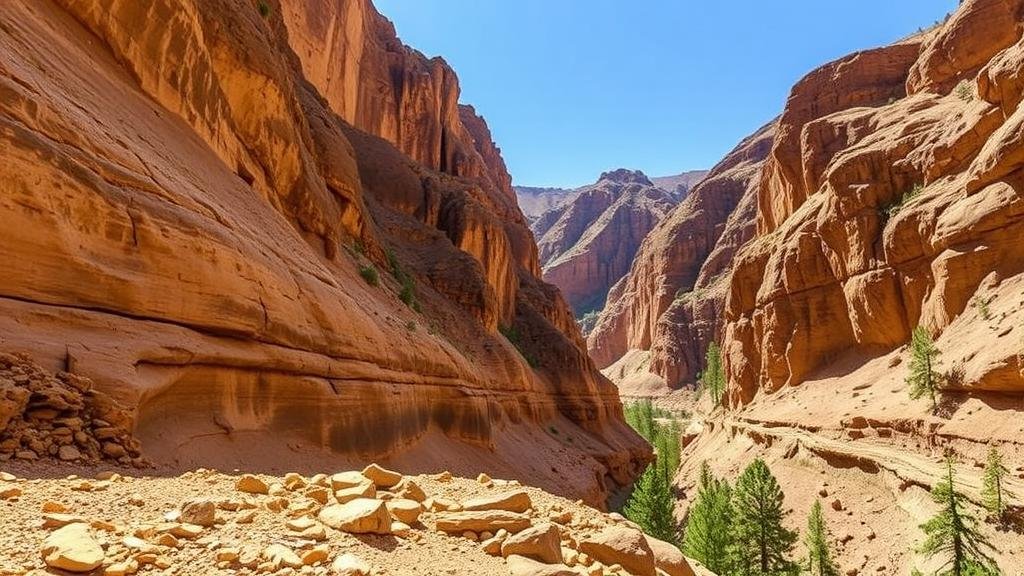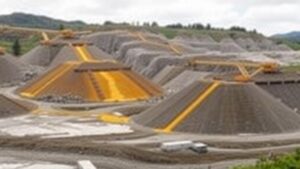Recovering Gold From Bench Deposits Along Steep Canyon Walls
Recovering Gold From Bench Deposits Along Steep Canyon Walls
Gold recovery from bench deposits along steep canyon walls is a practice that has garnered significant attention due to the potential for high yields and challenging extraction environments. This article explores the methods, equipment, and techniques used in such operations, emphasizing the unique considerations posed by steep terrains.
Understanding Bench Deposits
Bench deposits refer to layers of accumulated materials, typically consisting of soil, gravel, or sediment, that have settled along the walls of canyons and gullies. These deposits can contain significant amounts of gold, particularly as a result of natural processes like erosion and sedimentation, which concentrate valuable minerals in specific locations.
Geological Considerations
The stability and composition of canyon walls greatly influence the viability of gold recovery operations. Factors include:
- Rock Type: The geological formations should ideally be rich in gold-bearing minerals. Common host rocks include quartz veins and alluvial deposits.
- Erosion Patterns: Understanding the history of erosion can help identify where gold may have concentrated over time. For example, heavy rainfall can lead to increased deposits in certain areas.
- Stability of Slopes: Steep canyon walls pose risks of landslides, which can impede operations and pose safety concerns.
Methods of Gold Recovery
Several methods are employed to extract gold from these deposits, depending on the geological and environmental conditions. most common methods include:
- Panning: This traditional method involves using a pan to separate gold from other materials. It is effective in areas with less sediment and allows for quick sampling.
- Sluicing: A sluice box can capture gold particles as water flows through it. This method is suitable for larger-scale operations and can process more material than panning alone.
- Highbanking: This technique combines sluicing with mobility. Operators can transport equipment to different locations along canyon walls, enabling extraction from multiple bench deposits.
Equipment Used
Efficient gold recovery requires specialized equipment, particularly in steep environments. Key equipment includes:
- Portable Sluice Boxes: These are lightweight and easy to transport, making them ideal for navigating rough terrains.
- Water Pumps: Ensuring a steady flow of water is crucial for operations, especially in dry regions.
- Dredges: In some cases, dredges can be utilized for underwater recovery, although this may be limited to particular types of deposits.
Environmental and Legal Considerations
Canyon walls are often sensitive ecological areas that require careful management during recovery operations. Environmental considerations include:
- Habitat Disruption: Disturbing the land can disrupt local wildlife and ecosystems. Operators must implement measures to minimize this impact.
- Legislative Compliance: Depending on the jurisdiction, gold recovery activities may require permits. Understanding local laws and regulations is vital for legal compliance and sustainable practices.
Case Studies and Real-World Applications
Several examples illustrate successful gold recovery from bench deposits in steep canyons:
- The Klondike Gold Rush: During the late 19th century, miners recovered significant gold deposits from steep canyon walls by utilizing panning and sluicing methods, leading to rapid economic growth in the region.
- Modern Recreational Gold Mining: In areas such as California and Colorado, hobbyists are utilizing light equipment like portable sluice boxes to effectively recover gold while practicing responsible mining techniques.
Challenges and Solutions
Despite the potential for high yields, recovering gold from steep canyon walls presents several challenges:
- Access and Safety: The rugged terrain can limit access. Operators must use secure anchoring systems and develop safe working protocols to mitigate risks of slipping or falling.
- Water Accessibility: In dry conditions, finding a reliable water source can be challenging. Operational success often relies on the availability of water, which is essential for processing methods like sluicing.
Solutions include:
- Investing in portable water storage solutions to ensure a steady supply during operations.
- Developing partnerships with local authorities to obtain needed permits and legally access desired mining areas.
Actionable Takeaways
To summarize, recovering gold from bench deposits along steep canyon walls involves a comprehensive approach that encompasses geological understanding, suitable methodologies, and adherence to environmental regulations. Successful operation requires knowledge of local terrain, proper equipment, and safety measures. Individuals interested in this field should:
- Gain familiarity with relevant geological features to identify potential gold deposits.
- Research and adhere to local laws regarding mineral recovery to ensure sustainability.
- Use appropriate technology and methods tailored to the unique conditions of steep canyons.
By taking these steps, operators can effectively and responsibly recover valuable gold from steep canyon deposits while preserving the ecological integrity of these remarkable landscapes.



